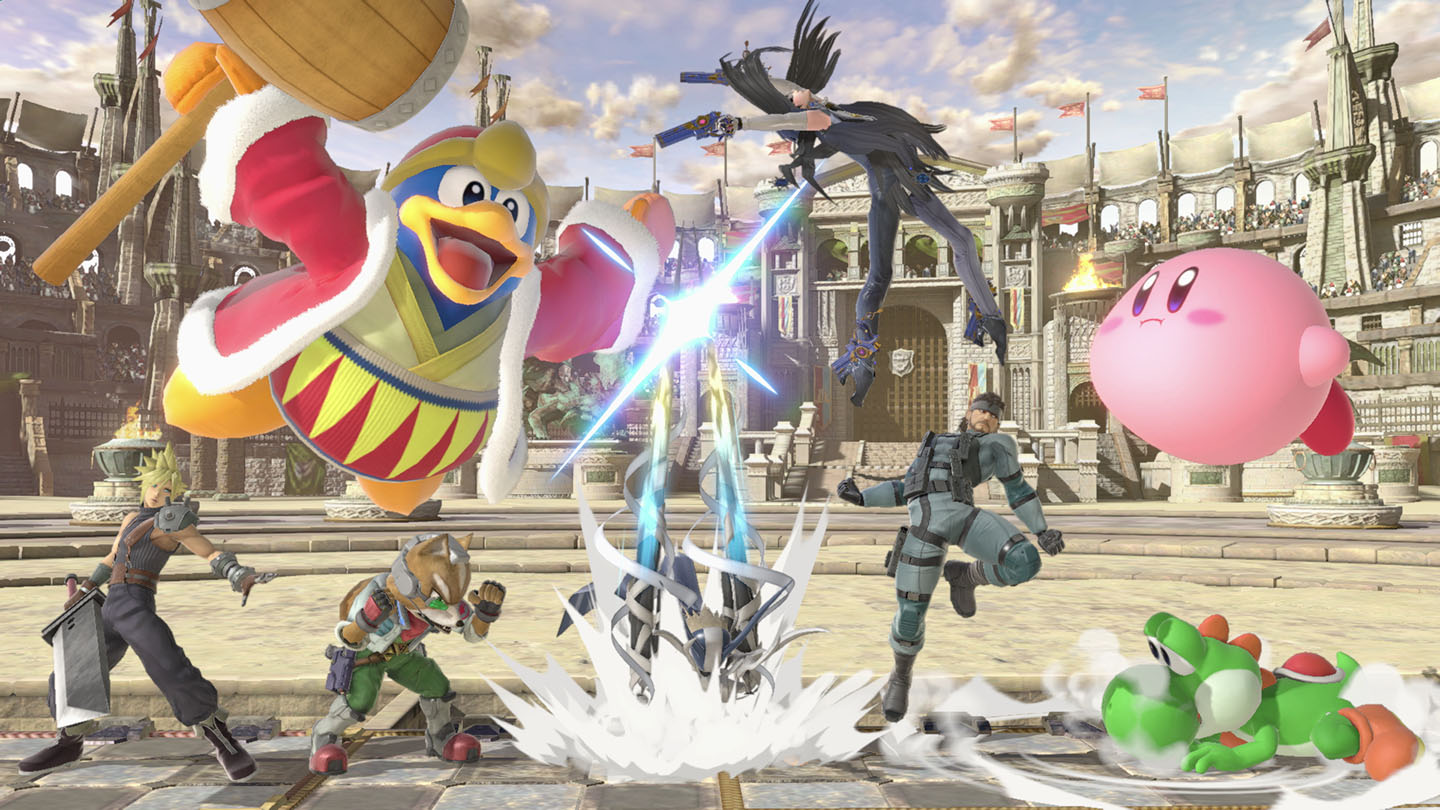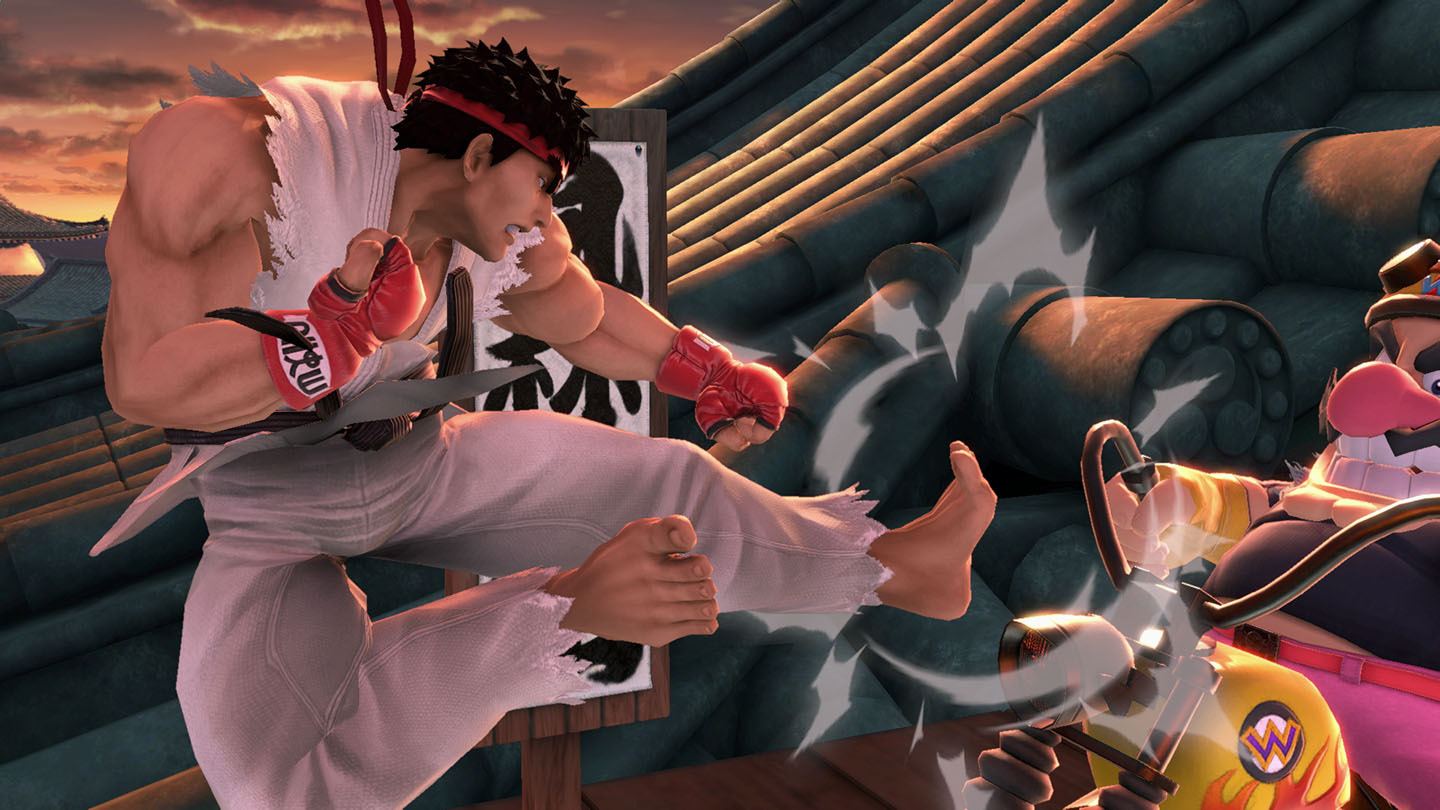
Since the launch of Smash Bros Ultimate, I’ve been following the thoughts of devout fans across the globe very closely. The buzz leading up to and following its release has been testament to what an achievement this game is, but more than anything, the outcries of ‘STOP PLAYING KING K ROOL’ bring sweet music to my ears. Granted, the fact I’m maining him is just proof that I have absolutely no skill at this game whatsoever, but every time I KO someone with my stupid little crown, I let out a maniacal laugh and think about how I ever lived without Donkey Kong’s long forgotten adversary. Long live our reptilian overload; well, at least until his inevitable nerf.
But whilst I was feverishly shaking with excitement at the announcement of the DK baddie, I was a little less impressed with Isabelle from Animal Crossing joining the party; at least until I took her on early in Smash Bros new solo adventure World of Light. Isabelle is an absolute beast and packs an incredible foray of useful skills to help her overcome her competition, snarling opponents with her fishing rod and burying Lloid traps underground to send enemies hurtling in the air. Other new characters include Simon from Castlevania, Ridley from Metroid and the Inklings from Splatoon, and that’s just scratching the surface. The rosta is now 74 characters strong and each brawler boasts an almost entirely unique skill set, individual play style, finishing move and even a handful of outfits. In short, the game is absolutely gargantuan.
The core game hasn’t changed much, and as you can probably guess, a standard brawl pits you against up to eight players either in teams or on your own to be the last man standing. Typically taking damage makes it easier for opponents to send you flying off the map, and depending on the rule set, hitting the Final Smash orb or causing enough damage allows you to unleash a deadly attack that usually spells game over for any foe standing in your path to victory. To aid you in battles items like swords, bombs and health pick-me-ups drop throughout matches, and getting to these quickest often gives you an edge over your enemies. These items are more often than not pulled from Nintendo’s expansive back catalogue, so it’s not unusual to see Solid Snake take on Sonic with a Pokeball that summons Alolan Riachu atop of Princess Peaches castle.
If it all sounds a little crazy, that’s because it is. Smash Bros is still fast paced, abrasive and an assault to your senses. Fights are often frantic, messy and hard to follow, and it’s this that often gives it the misconception that it’s not a proper fighting game. Ultimate just takes time to really get to grips with, which is why it’s important to properly practise before jumping straight online or into one of Smash Bros many modes; finding a fighter that can suit your style is the difference between victory and defeat.
Single player has received its biggest change for several iterations and despite the sacrifice of some of the guff modes Ultimate features its first attempted at a proper solo campaign. Part light RPG, part usual Smash antics, World of Light sees you traverse a beautiful 2D map taking part in near endless amounts of solo battles. There’s a very loose story holding it all together and a couple of cutscenes but none of it’s very interesting or compelling, but it doesn’t really matter as it’s a very fun way of unlocking fighters and getting to experience different play styles and maps in a short space of time.

I imagine there’s a few bemused faces as to why you start as Kirby in World of Light, but in my opinion he has one of the more unique play styles in the game, all whilst being entirely accessible and easy to master. Each battle gives you the chance to unlock either a Spirit (this generations replacement for the beloved Trophies) or a fighter, the latter of which can be used entirely at your disposal in any mode once defeated. There’s also some dungeon crawling with basic puzzles, with some areas having entry requirements that mean you have to come back later with different characters Any game with RPG elements wouldn’t be complete without obligatory shops to spend your in-game loot in, and new spirits and upgrades can be purchased as you progress.
There’s never any worry that the mode will get stale either, as each round makes use of Ultimate’s multitude of settings, like platforms having sticky floors and enemies being made of metal (and therefore making them near impossible to send flying). There’s also a generous amount of switching between stamina battles, hoard fights and typical Smash rounds. You can swap between fighters at any point, which is useful as despite a majority of battles being relatively easy, every now and again you’ll face a foe that really tests your Smash prowess – here’s looking at you Bayonetta who doesn’t. Stop. Kicking.
There’s over a thousand Spirits up for grabs, and whilst they aren’t as interesting as Trophies were in the previous entries they serve more purpose, but almost entirely in World of Light. Spirits have different attributes and types – think Rock-Paper-Scissors but with characters ranging anywhere from Porygon to Andy from Advance Wars. Gaining a type advantage is key to achieving success in most levels, and you can upgrade Spirits to further their strengths. You can also equip Spirits with supports, such as characters that equip you with certain items at the start of matches or those that give you small boosts to give you an edge. Are Spirits a fair trade for Trophies? Not really. They can be brought, summoned, upgraded, sold – it’s a little overwhelming and it slows the experience down. As much as I enjoy World of Light, I just wish I didn’t have to stop and change my Spirit type between each round just to make sure I have a fair shot of beating an opponent, and unfortunately it takes the shine off an otherwise fantastic mode.
Traditional Smash modes still remain, from Tournaments and Squad Strike to the modes you’ll probably fire up once like Super Sudden Death and Mob Smash. New Smash initiates will find taking part in a normal Smash battle a great place to start and you can customise rulesets to help hone your skills. Want to turn Spirits on? Go for it. Want to turn the time limit off and play until the end of time? Be our guest. The options are far from limiting and its wonderful to be able to play the game exactly how you want to.

The best single-player experience is still had via Classic Mode, and Ultimate gives it its best iteration to date. Picking different fighters gives you a different take on the mode, for example picking Pikachu means each battle will be against different Pokemon, whereas the Ice Climbers are faced with a series of double battles. It genuinely makes you want to complete all 74 variations of the mode and they feel like individual campaigns.
It’s no secret that Nintendo have struggled to find the correct balance with regards to online gaming, and Smash Bros has become the latest (and most notable) victim of their bizarre choices. Gone are the days of switching between ‘For Fun’ and ‘For Glory’ but rather players are shuffled into random lobbies, where you either dominate others or alternatively left at the mercy of much more experienced players. It’s a system that keeps Smash Bros alive and ensures you can always find a match, but the lack of control makes the experience wildly incoherent. Alternatively you can enter arenas, where up to eight players queue to fight in up to four-player Smashes. It’s a great way of involving yourself in the more competitive side of Smash Bros but it takes too long to join rounds in a game that’s otherwise fast-paced and frantic.
But when things irk you in Smash Bros Ultimate, there’s always something to bring a giant smirk back to your face. It’s the little things, like spending time listening to music from the games massive 721 song long soundtrack whilst seeing how many of the games 124 challenges you’ve yet to complete. It’s these moments when you really appreciate how much of a labour of love this game is. You can feel how much effort has been put in through every single fibre of its being, and that alone is enough to give commendation to everyone involved in its development. The fact that there’s still more to come via DLC and in-game events leaves you positively gobsmacked.
An achievement of ridiculous magnitude, Ultimate’s biggest strength lies in its ability to cater to all crowds. Casual fans and fair-weather gamers will find solitude in the games pick up and play ethos, but Smash Bros purists can relish in experiencing Smash Bros in its finest form on the greatest Nintendo console since the 64. The attention to detail is astonishing, and not one element or reference (no matter how vague) feels tacked on or out-of-place. This is definitely the ultimate experience for old school Smash Bros and new challengers alike and a genuine pleasure to play.
REVIEW CODE: A complimentary Nintendo Switch code was provided to Bonus Stage for this review. Please send all review code enquiries to press@4gn.co.uk.
Subscribe to our mailing list
Get the latest game reviews, news, features, and more straight to your inbox
Thank you for subscribing to Bonus Stage.
Something went wrong.
Super Smash Bros. Ultimate Review
-
Gameplay - 9/10
9/10
-
Graphics - 9/10
9/10
-
Sound - 9/10
9/10
-
Replay Value - 9/10
9/10
User Review
( votes)Overall
Summary
Smash Bros purists can relish in experiencing Smash Bros in its finest form on the greatest Nintendo console since the 64.






